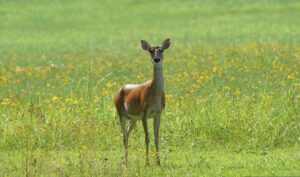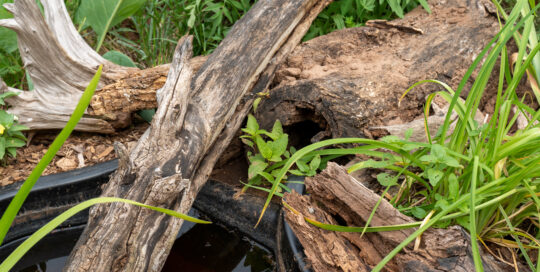Deer resistant native plants
Views: 316

Looking out my window last evening, my spouse and I watched approximately 20 white-tailed deer grazing in the field next to our house. We put out corn and other bird food all year around, so they like to come up and feed. I am incredibly lucky that these deer don’t seem to be interested in my garden plants, not even my day lilies. Aside from several small trees I’ve tried to grow, they’ve largely left my annuals and perennials alone. I do plant a lot of native plants, which are very beneficial to wildlife, and these plants have evolved together with deer. So, it makes sense that many have developed protection strategies. There are many deer resistant native plants.
Why are some plants deer resistant?
Deer resistance in plants can be due to a variety of factors, including taste, smell, and toxicity. One factor that can make a plant deer resistant is its taste. Some plants have a bitter or unpleasant taste that deer find unappetizing. These plants may contain compounds that are distasteful or even toxic to deer, such as tannins or alkaloids.
Another factor that can make a plant deer resistant is its smell. Some plants produce strong scents that deer find unpleasant, such as those from herbs like rosemary or lavender. These scents can confuse or repel deer, making them less likely to feed on the plants.
Finally, some plants are deer resistant because they contain toxins or other compounds that can be harmful to deer if consumed in large quantities. For example, some plants in the nightshade family produce chemicals called glycoalkaloids that can be toxic to deer and other herbivores.
Unfortunately, no plant is completely deer proof. When food is scarce, deer may be more likely to browse on plants that they would otherwise avoid.
These natives are likely to survive the ravening herds.
There are many deer-resistant native plants that can benefit other forms of wildlife in your area. Here are some examples:
- Butterfly Weed (Asclepias tuberosa) – This native plant is a great food source for butterflies and other pollinators. It also provides shelter for small mammals and birds.
- Wild Geranium (Geranium maculatum) – This plant produces beautiful flowers that attract bees and other pollinators. Its leaves and stems provide cover and nesting material for small birds.
- Wild Indigo (Baptisia australis) – This plant has attractive blue flowers that provide nectar for bees and other pollinators. Its seeds are a food source for birds and small mammals.
- Spicebush (Lindera benzoin) – This shrub produces fragrant yellow flowers that attract butterflies and other pollinators. Its leaves are a food source for the spicebush swallowtail butterfly and its berries provide food for birds.
- Coneflower (Echinacea purpurea) – This native plant produces beautiful purple flowers that attract bees and other pollinators. Its seeds provide a food source for birds.
- Goldenrod (Solidago spp.) – This plant produces bright yellow flowers that attract bees and butterflies. Its seeds provide food for birds and small mammals.
- Blazing Star (Liatris spp.) – This native plant produces tall spikes of purple flowers that attract bees and butterflies. Its seeds provide food for birds.
By incorporating these and other deer resistant native plants into your landscaping, you can create a habitat that benefits a variety of wildlife while lessening the chances your beauties get devoured.
Meet Leslie Miller
Leslie Ann Miller shares 3.5 acres in rural Oklahoma with birds, butterflies and wide variety of animals. She is currently transforming her yard with plantings…
Leslie's Recent Posts

Creating microclimates and microhabitats to benefit wildlife






